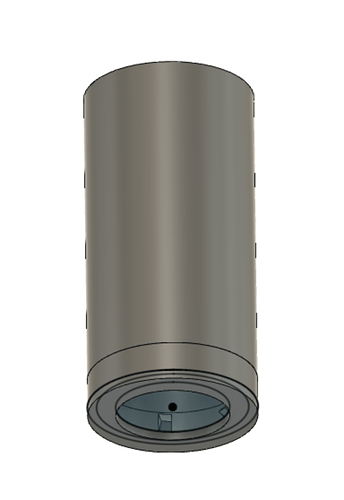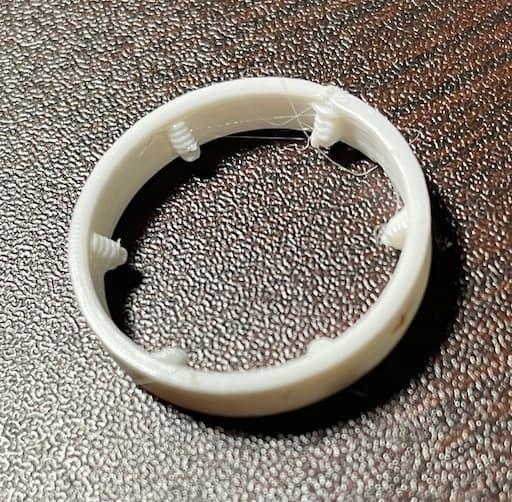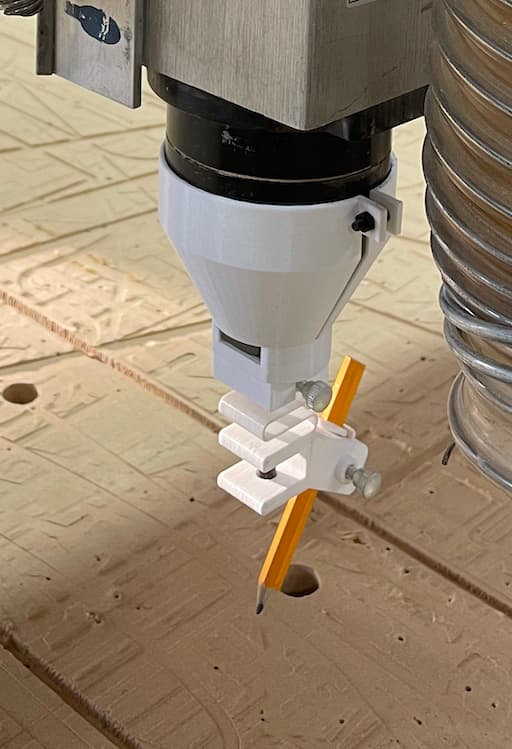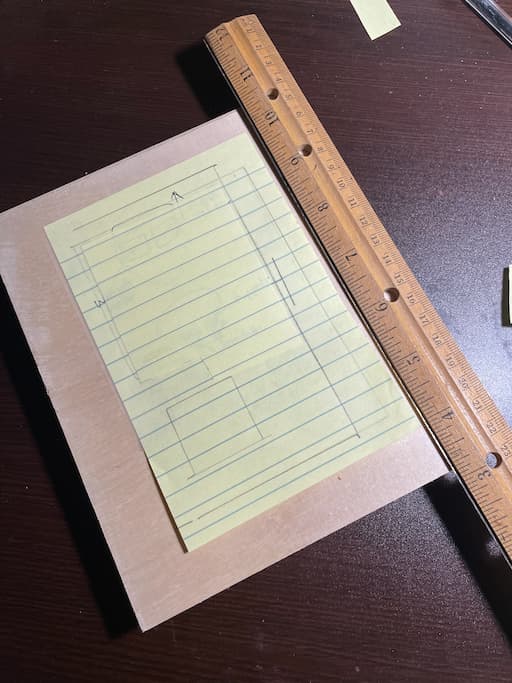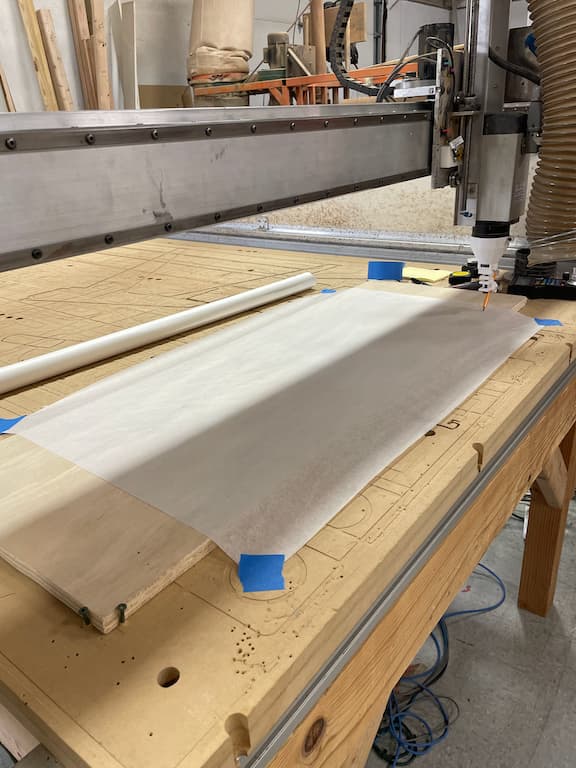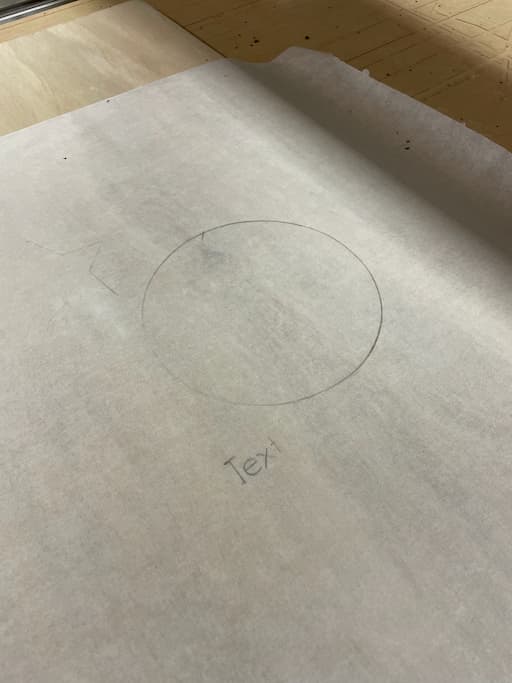Well I came in yesterday night to make my first stumbling attempts at getting the big CNC to be a plotter. Here are some notes and thoughts about what happened.
I removed the dust-brush magnetic lucite plate and attached the pencil and its mount to the router. (See IMG_2530 above for what it looks like). It somewhat fit, but I’ve got to redesign it a bit by making the conical section slightly taller. The wrap-around loop that tightens onto the router housing worked well. However I have to redesign how the ER20 collet and nut is held, because I blocked access to the router shaft for tightening the nut. The plastic spring that’s part of the mount also worked well. I could even use the Z-probe to set the Z-home.
Although the pencil is at an angle and the mount is firmly attached to the router itself, that is, the mount does not move or swing as the pencil is dragged, I had no problem manually drawing simple lines and squares using the handheld CNC controller.
I mounted a scrap 2’x4’ panel to the table and put tracing paper on it. I was ready to plot!
Next I tried a “flattened” SVG file from my CAD system (FreeCAD). Over on the VCarve machine I fed in the SVG file and looked around to see what toolpath I could use. I chose “engrave” and generated the GCode. I “sneaker-net” the USB drive to the CNC machine next to it. When it came up on the CNC screen the origin was off the table. Not good. It had been at 0,0 in CAD. What did VCarve do to it? So back and forth I went from VCarve machine to CNC machine until I had finally positioned it ON the table. Not knowing exactly where VCarve thought home was, i had to again position the CNC home over-and-over until it stopped giving me limit errors on the CNC screen. Next, when I ran the GCode I forgot about the spindle speed and quickly stopped it when the spindle started-up. Luckily I hadn’t been able to tighten the collect otherwise it would have torn itself to pieces. On the CNC machine I overrode sprindle percentage to 0%. Please remember that I’m new to all this so it takes me time to reason out what went wrong and to attempt various ways to correct the issue. Bottom line, after resolving home & spindle the pencil would move, lower but then stop and go no further. Ugh. No matter what I changed it would get stuck in the same GCode. I can’t decode GCode yet so I gave up and I tried plan B.
My next attempt was to just use VCarve directly. In other words, don’t use my SVG, but a simple drawing directly with VCarve. I drew a circle, star, curvy line and text. Then back through the pipeline that I was getting to know quite well: select toolpath, calculate toolpath, save to USB drive, unplug USB on VCarve, plug USB into CNC machine, find mount, load GCode, and attempt to run it. In time I got it to start drawing on the paper. It would draw each geometric shape three times on top of itself (which I assumed was caused by the “engrave” toolpath). It did the text, the circle, and started the star and then it would stop. It never drew the curvy line. But it was beginning to work!
In the meanwhile another ASMBLY member stopped by and suggested I use a Drag Knife Toolpath. So onto Google I go to look up VCarve Drag Knife. I watch a short Youtube video about it. I find it’s a VCarve Gadget and locate it on the menus. I try to use it, but I’m confused about how to save the Toolpath. Finally I find save-toolpath. And then went through my pipeline to the CNC. However when I run the GCode it does the initial move and stops on a GCode line. Nada! Repeat. Same thing! Ugh.
It’s late. I close up, clean up, and go home.
Summary/To-Do’s
- Rework Mount
- SVG to GCode is my stumbling block - do I need specific GCode for this application?
- Be able to interpret GCode when things stop
